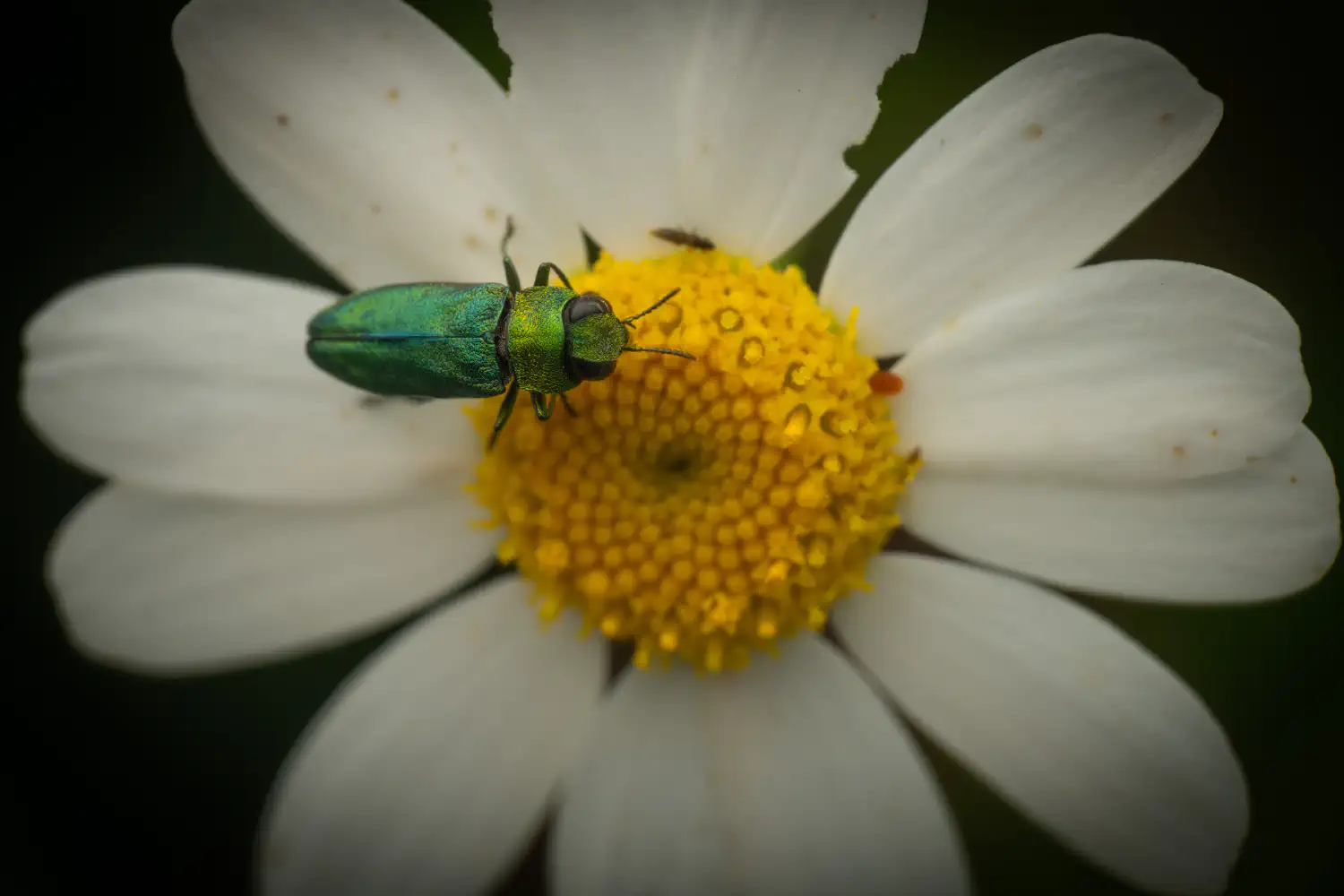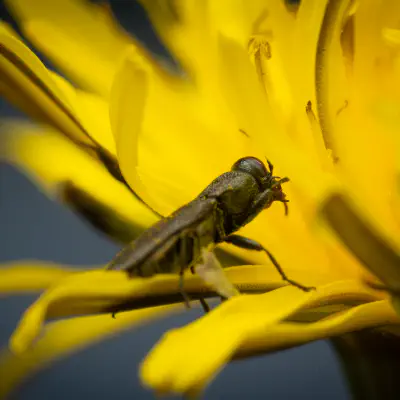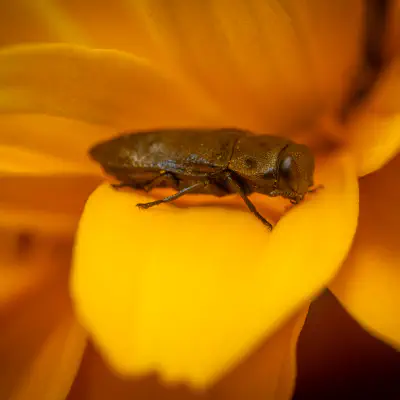Jewel Beetles Lat. “Buprestidae“
Buprestidae is a family of beetles known as jewel beetles or metallic wood-boring beetles because of their glossy iridescent colors. Larvae of this family are known as flatheaded borers. The family is among the largest of the beetles, with some 15,000 species known in 450 genera. In addition, almost 100 fossil species have been described.
Hierarchy
Description and ecology
Shape is generally cylindrical or elongate to ovoid, with lengths ranging from 3 to 80 mm (0.12 to 3.15 in), although most species are under 20 mm (0.79 in). Catoxantha, Chrysaspis, Euchroma and Megaloxantha contain the largest species. A variety of bright colors are known, often in complicated patterns. The iridescence common to these beetles is not due to pigments in the exoskeleton, but instead is caused by structural coloration, in which microscopic texture in their cuticle selectively reflects specific frequencies of light in particular directions. This is the same effect that makes a compact disc reflect multiple colors. The larvae bore through roots, logs, stems, and leaves of various types of plants, ranging from trees to grasses. The wood boring types generally favor dying or dead branches on otherwise-healthy trees, while a few types attack green wood; some of these are serious pests capable of killing trees and causing major economic damage, such as the invasive emerald ash borer. Some species are attracted to recently burned forests to lay their eggs. They can sense pine wood smoke from up to 50 miles away, and can see infrared light, helping them to zero in as they get closer to a forest fire. Ten species of flatheaded borers of the family Buprestidae feed on spruce and fir, but hemlock is their preferred food source (Rose and Lindquist 1985). As with roundheaded borers, most feeding occurs in dying or dead trees, or close to injuries on living trees. Damage becomes abundant only where a continuing supply of breeding material is available. The life history of these borers is similar to that of the roundheaded borers, but some exceedingly long life cycles have been reported under adverse conditions. Full-grown larvae, up to 25 mm long, are characteristically flattened, the anterior part of the body being much broader than the rest. The bronzed adults are usually seen only where suitable material occurs in sunny locations.
Systematics
Jewel beetle classification is not yet robustly established, although there appear to be five or six main lineages, which may be considered subfamilies, possibly with one or two being raised to families in their own right. Some other systems define up to 14 subfamilies. The earliest unambiguous members of the family are known from the Middle Jurassic, around 160 million years ago, earlier claimed records from the Triassic based on isolated elytra are not definitive.
See also
Campsosternus
Further reading
Bellamy, C.L. & Nelson, G.H. (2002): Buprestidae. In: Arnett, Ross H. Jr. & Thomas, Michael C.: American Beetles (Volume 2). CRC Press. Akiyama, K. and S. Ohmomo. 2000. The Buprestid Beetles of the World. Iconographic Series of Insects 4. ISBN 4-943955-04-5. A 341-page work with 120 colour plates. Williams, G., Mitchell, K. and Sundholm, A. M. 2024. Australian Jewel Beetles: An Introduction to the Buprestidae ISBN 9781486317400 CSIRO Publishing Štrunc V. (2022): Jewel Beetles of the World, Illustrated guide to the Superfamily Buprestoidea, 504 species and subspecies in 111 genera
External links
Jewel beetle site, with extensive lists of species and many photos Flickr Images ZinRus Impressive photos. Jewel beetles depicted on postage stamps Jewel beetles can hear fires, short summary of a JEB-Paper Jewel Beetle High Resolution Photography
Ancestry Graph
Further Information
„Jewel Beetles“ on wikipedia.org
„Jewel Beetles“ on iNaturalist.org
Copyright

This article uses material from the Wikipedia article Buprestidae the free encyclopedia Wikipedia which is released under Creative Commons Attribution-ShareAlike 4.0 International License). On Wikipedia a list of authors is available.

Little beings in print
Order our calendars and books today!
Compiled with love. Printed sustainably. Experience our little beings even more vividly in print. All our publications are available for a small donation.




